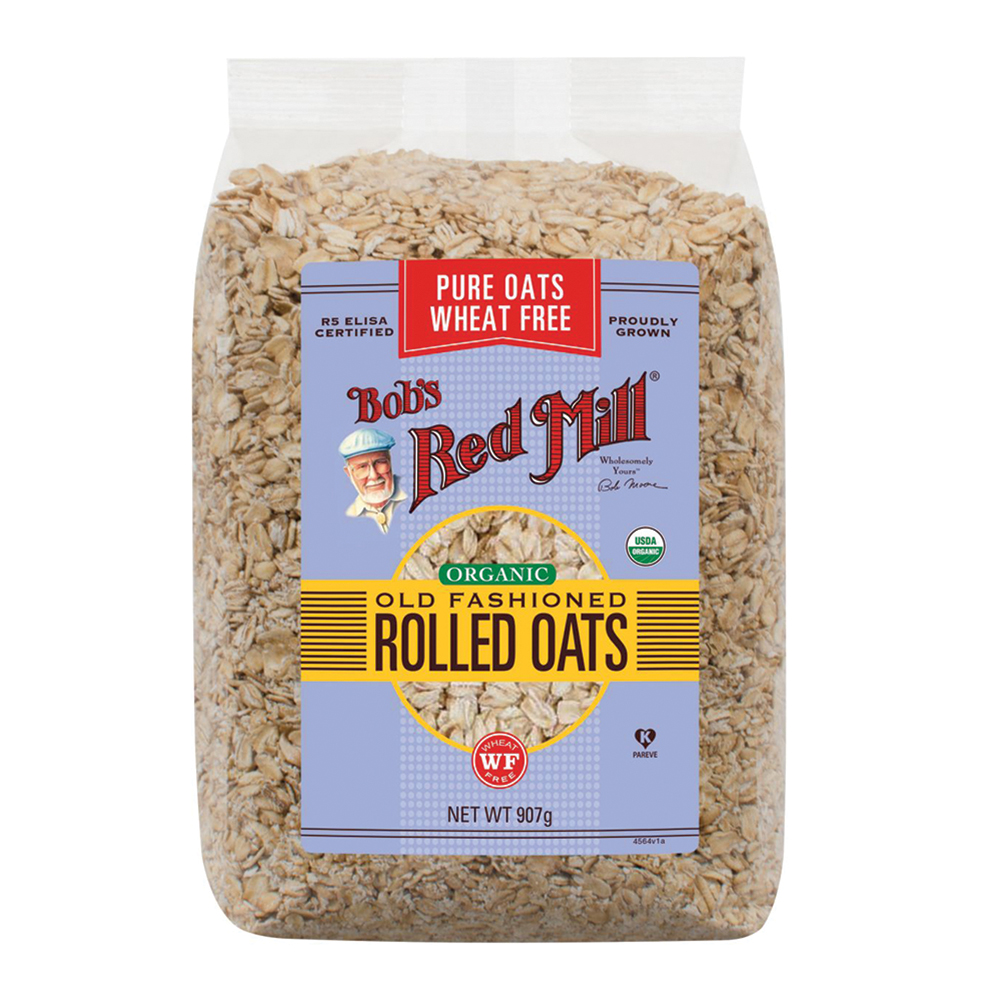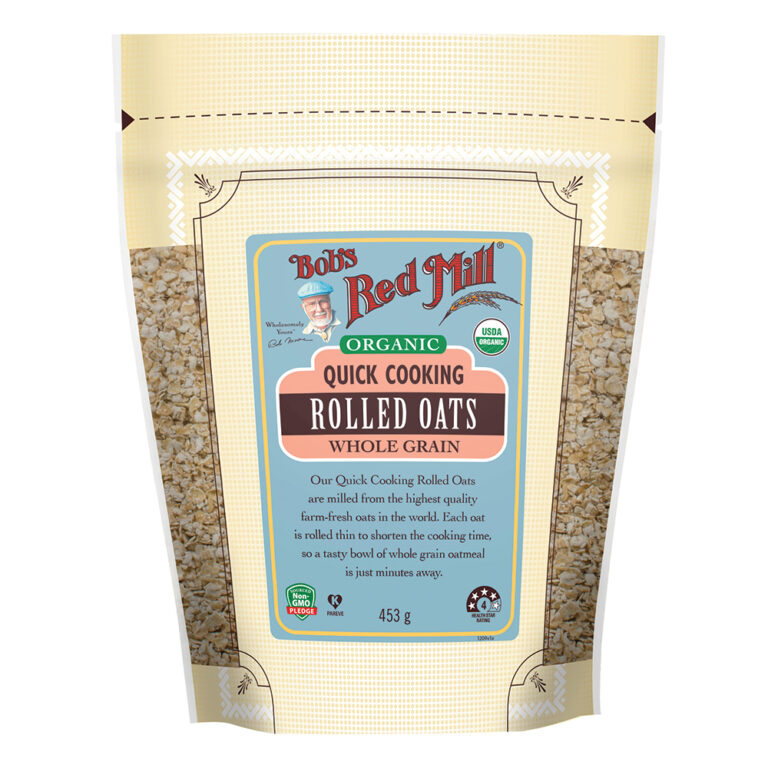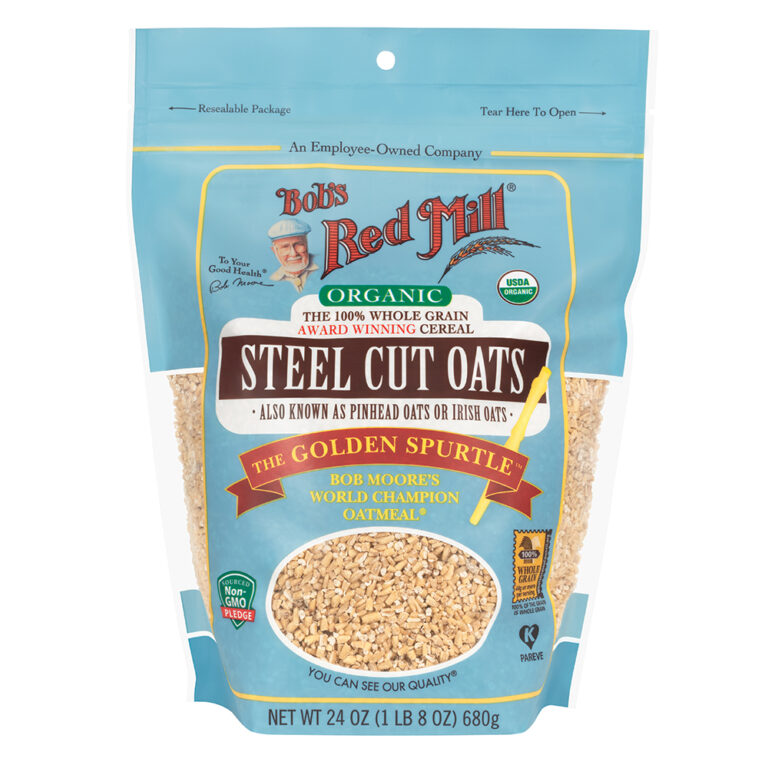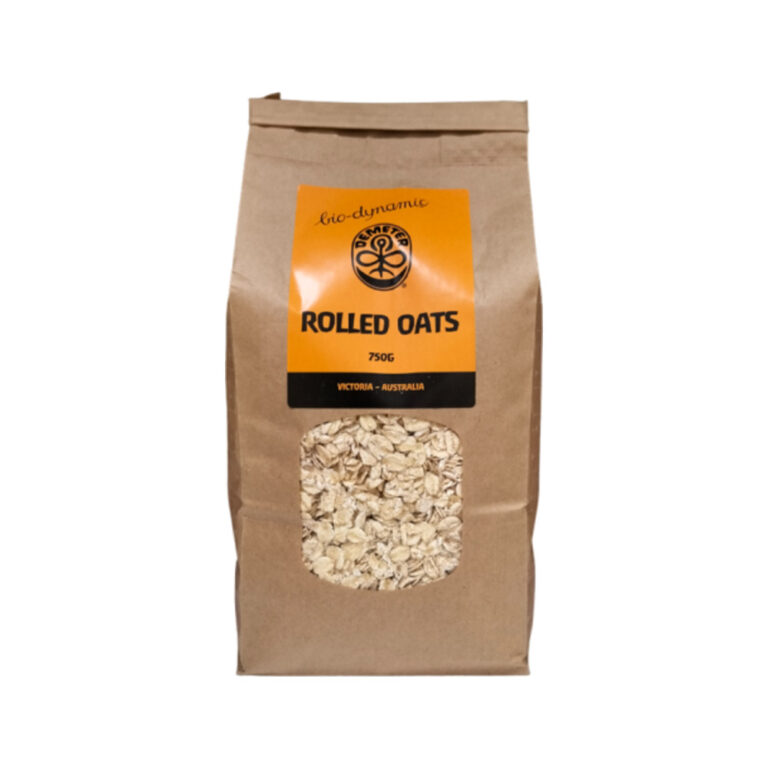Bobs Red Mill Organic Old Fashioned Rolled Oats
Start your day with Bob’s Red Mill Organic Old Fashioned Rolled Oats—a wholesome, gluten-free, high-fiber, and whole grain breakfast option that’s also perfect for baking cookies, breads, and more.
$25.81
In stock
Certified Organic
| Certification |
|---|
Product information
| Brand | |
|---|---|
| Weight | |
| Product Attributes | , , , , , |
Bob’s Red Mill Organic Old Fashioned Rolled Oats are a hearty and nutritious staple, ideal for making a classic bowl of gluten-free oatmeal or adding whole grain goodness to your favourite baked goods. Milled from premium-quality, certified organic oats, these rolled oats are an excellent source of fibre, providing 7g of protein per serving to help keep you full and energised throughout the day.
Whether you’re making a warm, satisfying breakfast or adding texture to cookies, muffins, breads, or cakes, these oats offer both nutrition and versatility.
Key Benefits:
- Certified Organic and Gluten Free
- High in dietary fibre and a good source of plant-based protein
- Made from whole grain oats for sustained energy
- Perfect for oatmeal, overnight oats, and baking
- Non-GMO, vegan-friendly, and minimally processed.
Ingredients
Wheat free whole grain oats
Directions for use
Cooking instructions:
Stovetop: Bring water and salt to a boil. Add Old Fashioned Rolled Oats, reduce heat to medium and cook, stirring occasionally, for 10 minutes (or longer for creamier oatmeal). Remove from heat and let stand for 2 minutes.
Microwave: In a large bowl, combine 1/2 cup Old Fashioned Rolled Oats, 1 cup water and pinch of salt. Cover and microwave on high for 2 minutes. Let stand for 2 minutes. Stir well before eating. Makes 1 serving.
Customer Reviews
Online Sports Nutrition and Natural Dietetics.
Chances are there wasn't collaboration, communication, and checkpoints, there wasn't a process agreed upon or specified with the granularity required. It's content strategy gone awry right from the start. Forswearing the use of Lorem Ipsum wouldn't have helped, won't help now. It's like saying you're a bad designer, use less bold text, don't use italics in every other paragraph. True enough, but that's not all that it takes to get things back on track.
The villagers are out there with a vengeance to get that Frankenstein
You made all the required mock ups for commissioned layout, got all the approvals, built a tested code base or had them built, you decided on a content management system, got a license for it or adapted:
- The toppings you may chose for that TV dinner pizza slice when you forgot to shop for foods, the paint you may slap on your face to impress the new boss is your business.
- But what about your daily bread? Design comps, layouts, wireframes—will your clients accept that you go about things the facile way?
- Authorities in our business will tell in no uncertain terms that Lorem Ipsum is that huge, huge no no to forswear forever.
- Not so fast, I'd say, there are some redeeming factors in favor of greeking text, as its use is merely the symptom of a worse problem to take into consideration.
- Websites in professional use templating systems.
- Commercial publishing platforms and content management systems ensure that you can show different text, different data using the same template.
- When it's about controlling hundreds of articles, product pages for web shops, or user profiles in social networks, all of them potentially with different sizes, formats, rules for differing elements things can break, designs agreed upon can have unintended consequences and look much different than expected.
This is quite a problem to solve, but just doing without greeking text won't fix it. Using test items of real content and data in designs will help, but there's no guarantee that every oddity will be found and corrected. Do you want to be sure? Then a prototype or beta site with real content published from the real CMS is needed—but you’re not going that far until you go through an initial design cycle.



